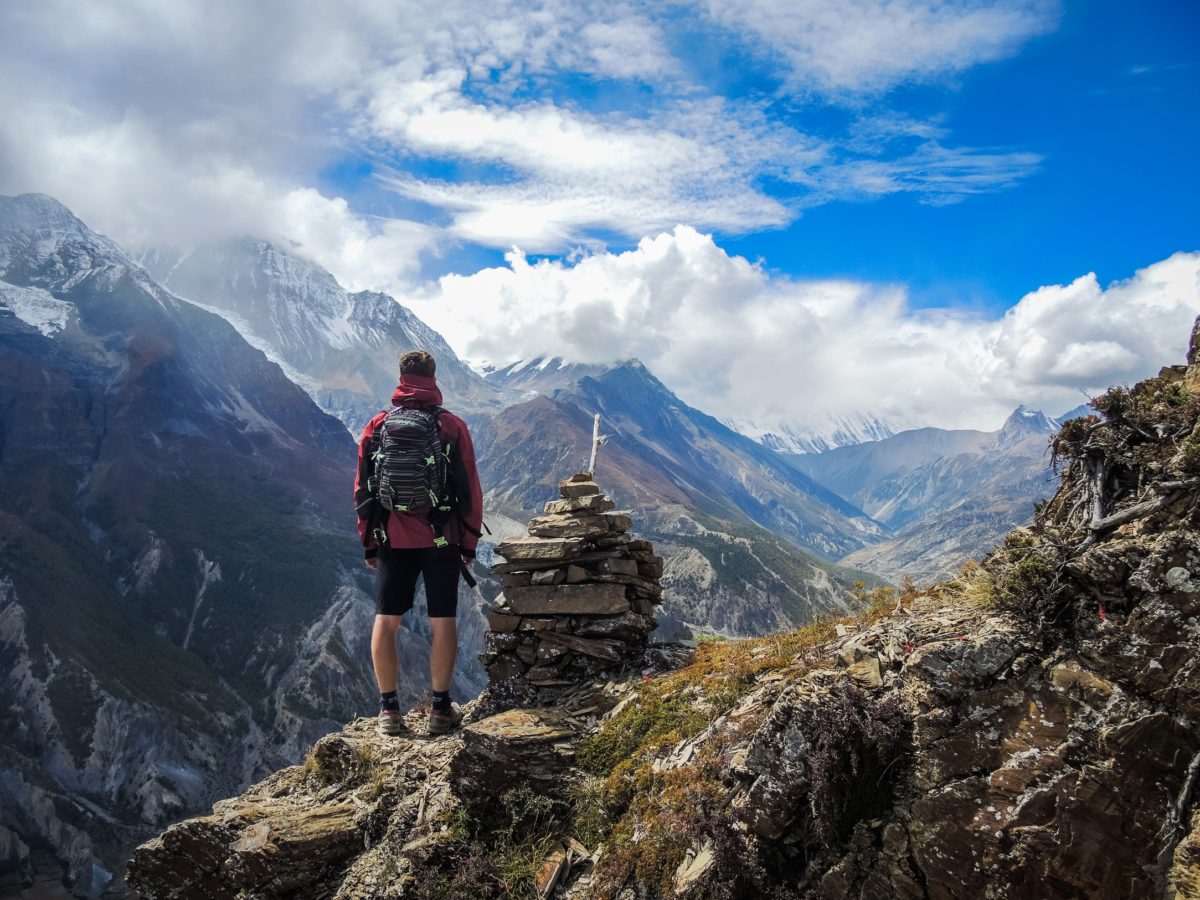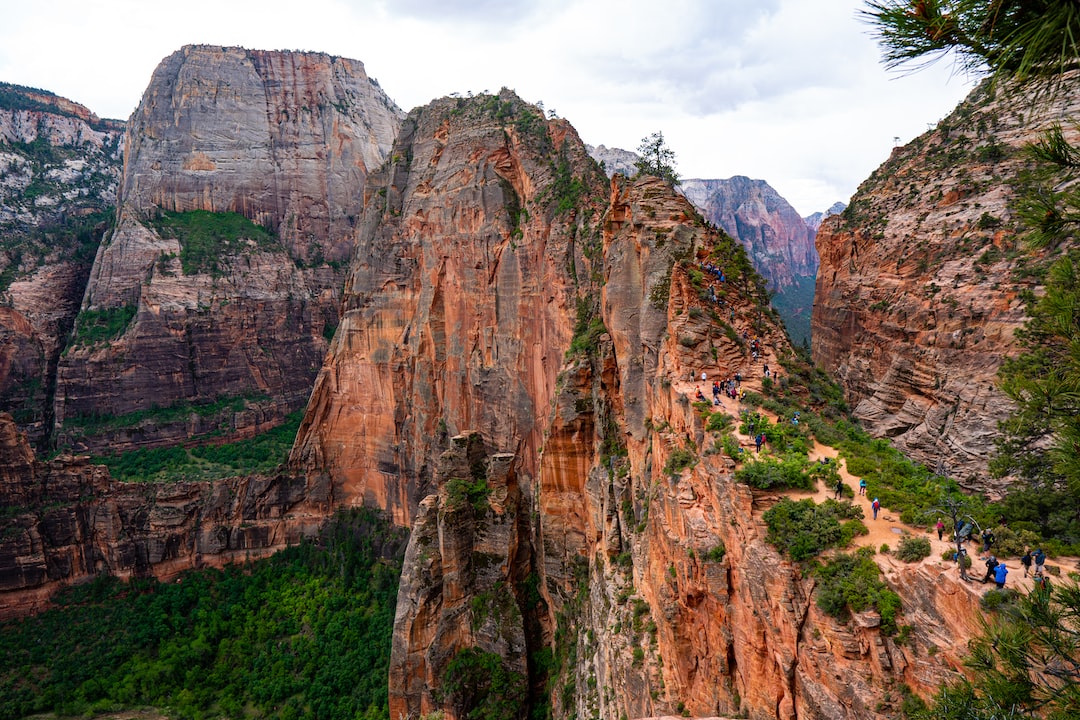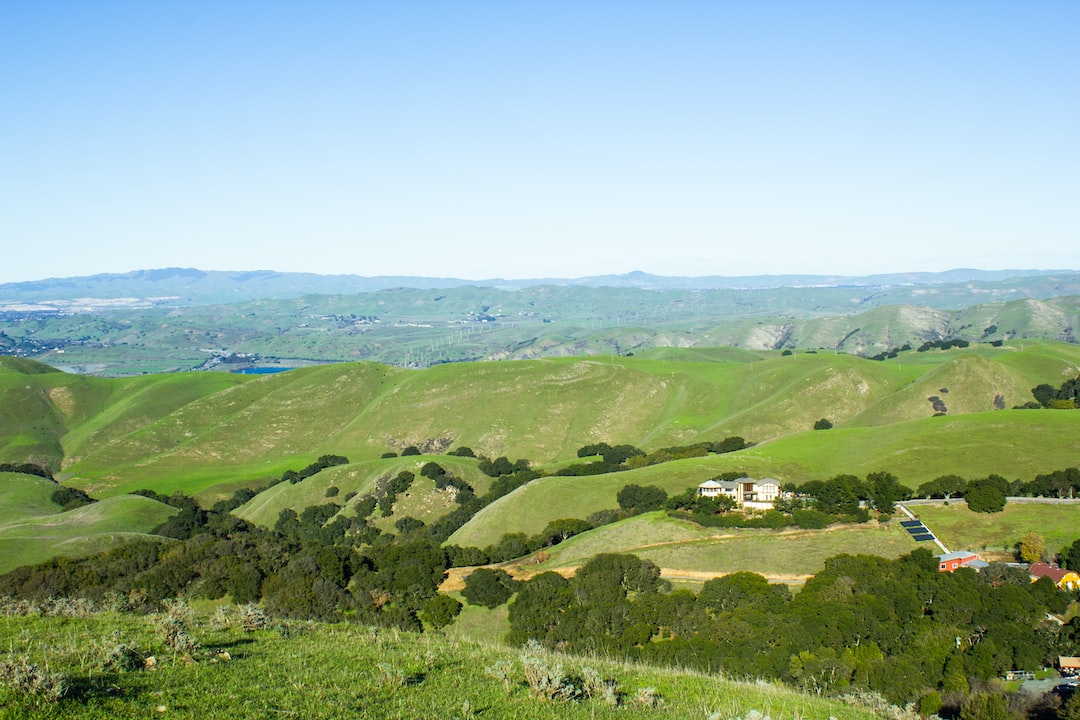Heading out hiking or to climb a mountain peak and wondering about the effects of altitude on breathing?
Bottled oxygen is normally only used for advanced mountaineering – common above 7,000m (22,965 ft) and practically mandatory above 8,000m (26,246 ft) when you enter the so-called death zone.
For most recreational hikes you will not need extra oxygen but you should be aware of the risks and symptoms of altitude sickness which can occur above 2,500 meters (8,000 ft), becoming more likely as you ascend. The higher you go above sea level the less oxygen there is in the atmosphere – at Everest Base Camp, for example, there is 53% less oxygen.
Oxygen levels at Altitude
At sea level, there is 20.9% oxygen present in the air we breath. This is optimal for humans and we have evolved over millions of to be adapted to this ratio of air as we breathe.
Some groups of people who have lived for hundreds of years at higher altitude have some adaptions that make it easier for them to thrive.
Certain natives of Tibet, Ethiopia, and the Andes have been living at these high altitudes for generations and are protected from hypoxia as a consequence of genetic adaptation.
Wikipedia
Despite these adoptions, there is no escaping the lack of oxygen. For every 100 feet, you climb you lose about 3% of available oxygen – because the air is thinner.
If you’re interested to know how much oxygen you have at different altitude – check out this table below:
| Oxygen % | Meters | Feet |
| 20.9 | 0 | 0 |
| 19.6 | 500 | 640 |
| 18.4 | 1000 | 3281 |
| 17.3 | 1500 | 4921 |
| 16.3 | 2000 | 6562 |
| 15.3 | 2500 | 8202 |
| 14.4 | 3000 | 9843 |
| 13.5 | 3500 | 11483 |
| 12.7 | 4000 | 13123 |
| 11.9 | 4500 | 14764 |
| 11.2 | 5000 | 16404 |
| 10.5 | 5500 | 18045 |
| 9.9 | 6000 | 19685 |
| 9.3 | 6500 | 21325 |
| 8.7 | 7000 | 22966 |
| 8.2 | 7500 | 24606 |
| 7.7 | 8000 | 26247 |
| 7.2 | 8500 | 27887 |
| 6.8 | 9000 | 29528 |
Altitude Sickness
Altitude sickness is caused by low amounts of oxygen in the blood. Symptoms can include headaches, vomiting, and dizziness, and the best cure is acclimatization, bottled oxygen and/or descending to a lower altitude.[1]
The onset of altitude sickness typically occurs for some people above 2,500m (8,000 ft) and the likely hood of it occurring increase the higher you climb. Altitude sickness is most prevalent in those who ascend too rapidly and don’t give the body a chance to acclimatize.
The effects of high altitude vary greatly, but the risks[2] are increased by:
- Living near sea level
- Going too high too fast
- Overexertion
- Sleeping at too high an altitude
- Having a history of altitude sickness
There are a number of key ways to improve your body’s response at altitude and ways to mitigate these risks – but interestingly being physically fit does not seem to decrease the risk.[3]
It’s impossible to predict who will be affected, though research has found that those who are obese tend to be more susceptible. NY Times
Acclimatize
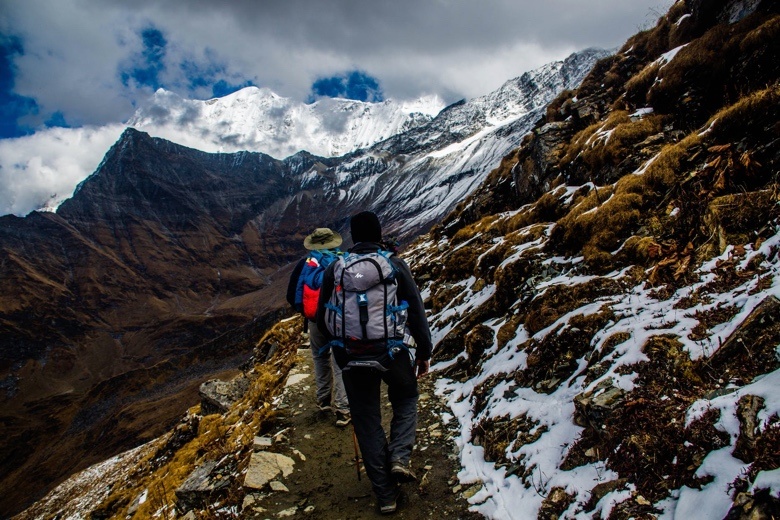
The best way to limit the likelihood of getting altitude sickness is to increase your elevation by no more than 300 meters (1,000 ft) per day.
While Yaks live at 3000m and above and cannot survive at low altitude – most humans are adapted to life at sea level. It takes days for your body to create enough new red blood cells to become more efficient at altitude. The body begins to adapt to elevation overnight, but the longer you give yourself the more you will acclimatize. There is also strong evidence that your body retains adaptions from repeated trips to high elevation.[4]
The longer you have to acclimatize at each stage the less likely you are to suffer from altitude sickness. It is for this reason that on some of the largest mountain treks like Everest they will climb to camp two and three and then return to base camp before ascending again.
Most people can ascent to 2000m (6500 ft) in one day with no problem, but approximately 20% of those who ascent to 2500m (8000 ft) and 40% of those ascending to 3000 m (10,000 ft) develop Acute mountain sickness (AMS)[5]
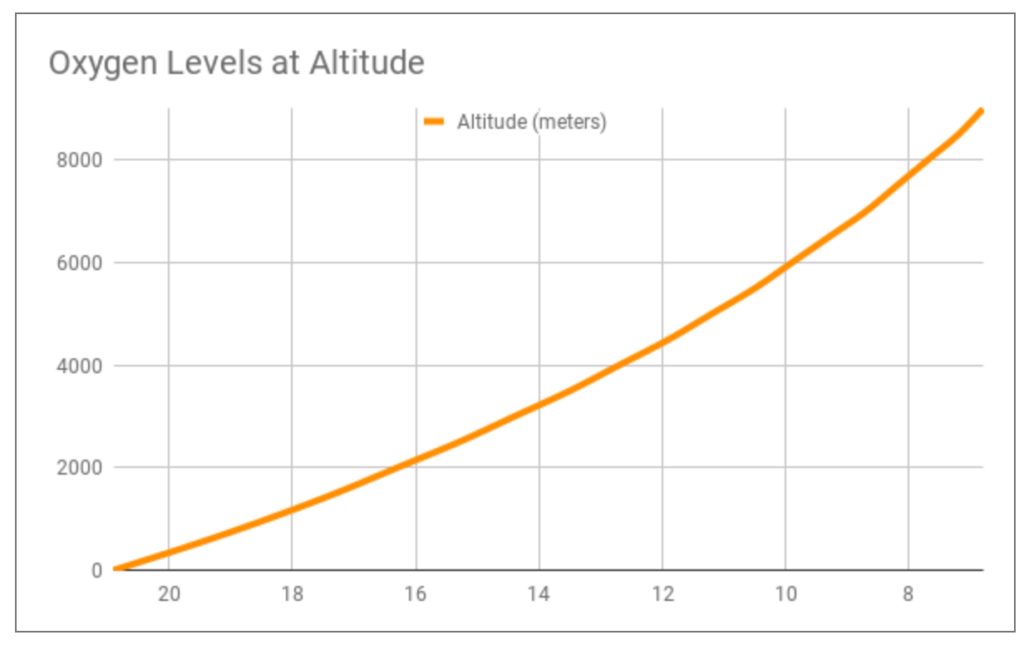
Acute Altitude Sickness
There are a few different versions of altitude sickness that effect either the lungs or the brain. In milder forms, about 75% of people that hike over 3000 meters (10,000 ft) will experience mild AMS symptoms, but more dangerous forms of altitude sickness are much less common.
AMS – High-altitude cerebral edema
The first stage of Altitude Diseases (AD) is Acute Altitude Sickness (AMS) which is characterized by a headache plus one or more manifestations. This is typical for recreational hikers and skiers or those ascending to high too fast.
HAPE – High Altitude Pulmonary Edema
High Altitude Pulmonary Edema is a more series form of altitude sickness where fluid accumulates in the lungs. It is a major cause of death related to high-altitude exposure and what makes certain people susceptible to it is currently unknown.[6]
The main signs are cough, chest tightness and shortness of breath. The most important treatments are emergency oxygen and descending to a lower altitude – ideally below 1,000m.[7]
HACE – High Altitude Cerebral Edema
High Altitude Cerebral Edema is a form of acute mountain sickness where fluid penetrates the brain. It is a rare condition, occurring in 1% of people who ascent to 4,000m (13,000 ft).[8]
Treating altitude sickness
Stay alert and be aware of the symptoms. If symptoms persist it’s imperative that you seek emergency oxygen or descend rapidly.
Hiking At Altitude
When hiking at altitude you’ll be breathing deeper naturally to carry oxygen to your muscles. Each breath has less oxygen, so you’ll need more breaths and a slower pace.
Slower Pace
A slower pace allows you more time to recover between each step. Your muscles are working at with limited oxygen, so a slower pace is important to prevent over exhaustion. You may need to stop between steps on challenging high-altitude ascents and/or take shorter steps.
Steady Pace
A steady pace is important to get up the mountain in a reasonable time. For recreational treks walking poles to a great job of helping to set a pace and rhythm in your stride.
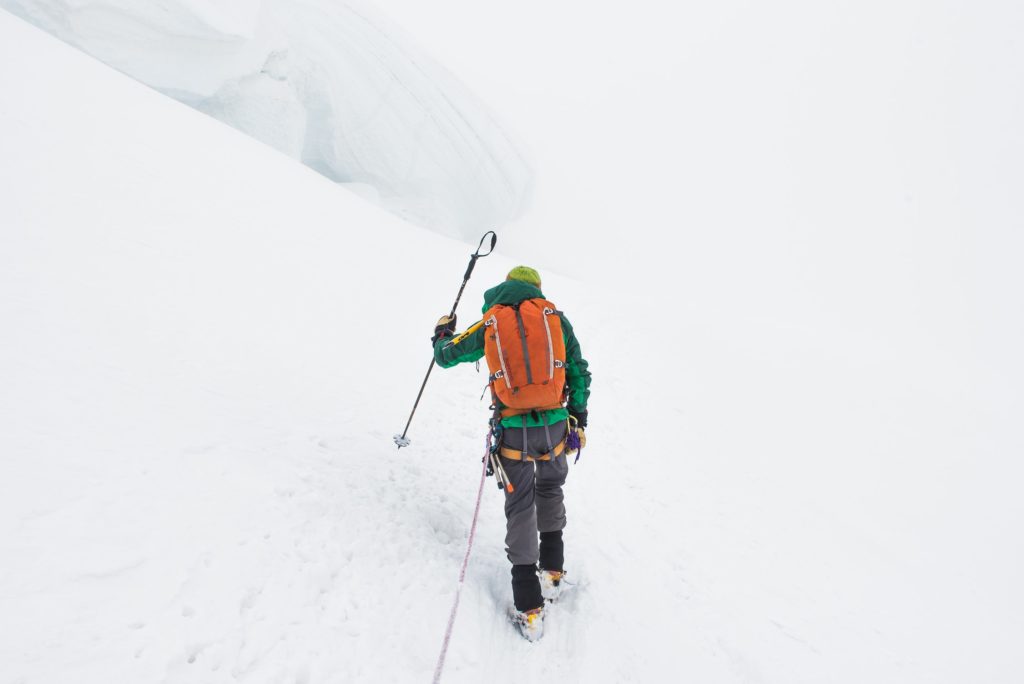
Breath Deeply
Breathing deeply will come naturally, but if you’re short of breath take notice of your breath and focus on breathing even more deeply with each step and between steps.
Wear Sun protection
The sun is particularly fierce in the mountains, and the higher you go the less protection there is from the sun. UV rays at altitude are stronger and can cause skin damage much faster. The effects of UV are even more exaggerated if your waking on or near snow which increases its power and in some cases could lead to snow blindness – if you’re not wearing wraparound sunglasses.
Extra Protection
Long sleeves, long pants, hats, and gloves will help protect your skin from the UV, the cold and the wind. Weather changes fast at altitude and clouds sweep in with a moment notice. In 30 minutes the weather can change by 30° degrees.[9] While air temperature tends to drop by 3.5 degrees for every 1000 feet of elevation gain.
It’s always advisable to have an extra layer or two in your pack – a thermal layer and a waterproof layer to keep you dry. Getting wet is the fastest way to heat loss.
Final thoughts
If you’re hiking below 2,000m (6500 ft) then altitude sickness is not something you need to worry about. When you ascend above this then you should be on the lookout for symptoms so that you can manage them and descend to safer ground if need be.
Most hikers don’t need bottled oxygen, and it is typically only used on high altitude expeditions above 6-7,000m where the lack of oxygen makes it very difficult and much more risky to hike unaided.

